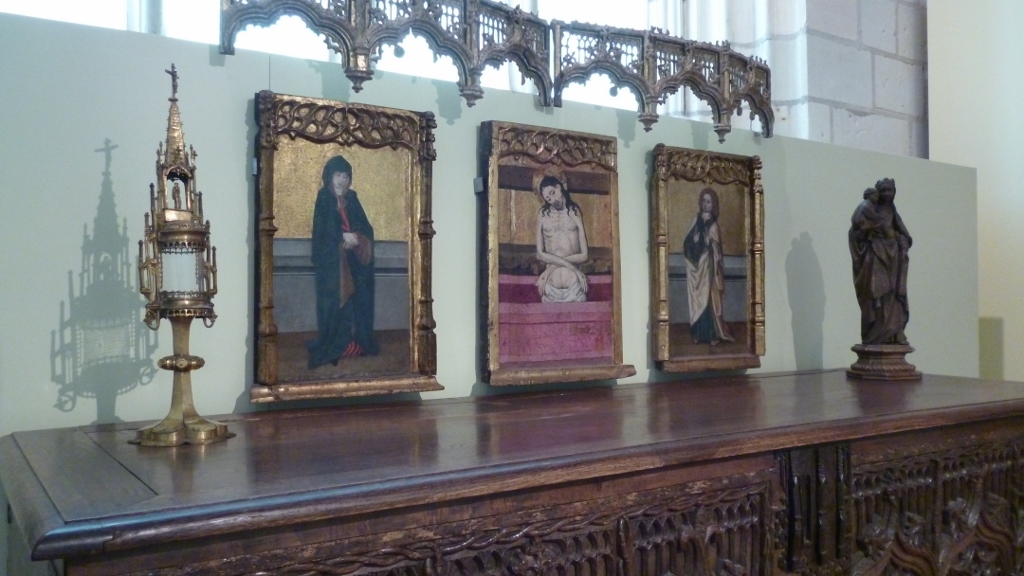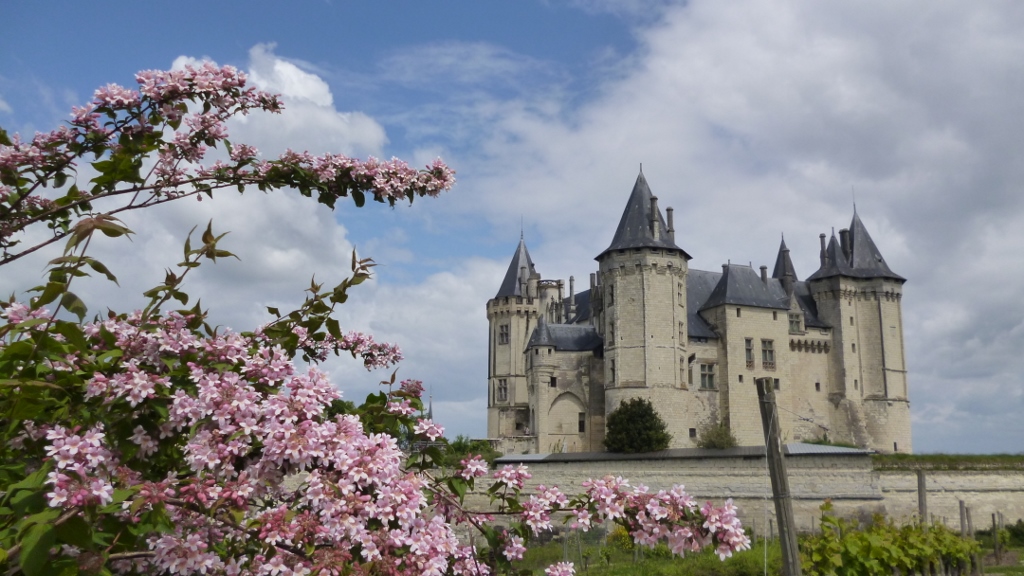 It was a beautiful day when I visited Saumur but I must admit that it was colder than I expected. I parked the car near the chateau and walked to the tourist office to see if I could get myself a walking map of the city. Strangely enough, the map misses many interesting places including this building known as the Maison des Compagnons which dates from the 15th century.
It was a beautiful day when I visited Saumur but I must admit that it was colder than I expected. I parked the car near the chateau and walked to the tourist office to see if I could get myself a walking map of the city. Strangely enough, the map misses many interesting places including this building known as the Maison des Compagnons which dates from the 15th century.  It was in ruins and sold for a symbolic franc to the Assiciation Ouvrière des Compagnons and was rebuilt I 1982 as a training center for apprentice stonecutters. Just down the hill from here is the Église Saint-Pierre which is the only church of the enclosed town.
It was in ruins and sold for a symbolic franc to the Assiciation Ouvrière des Compagnons and was rebuilt I 1982 as a training center for apprentice stonecutters. Just down the hill from here is the Église Saint-Pierre which is the only church of the enclosed town. 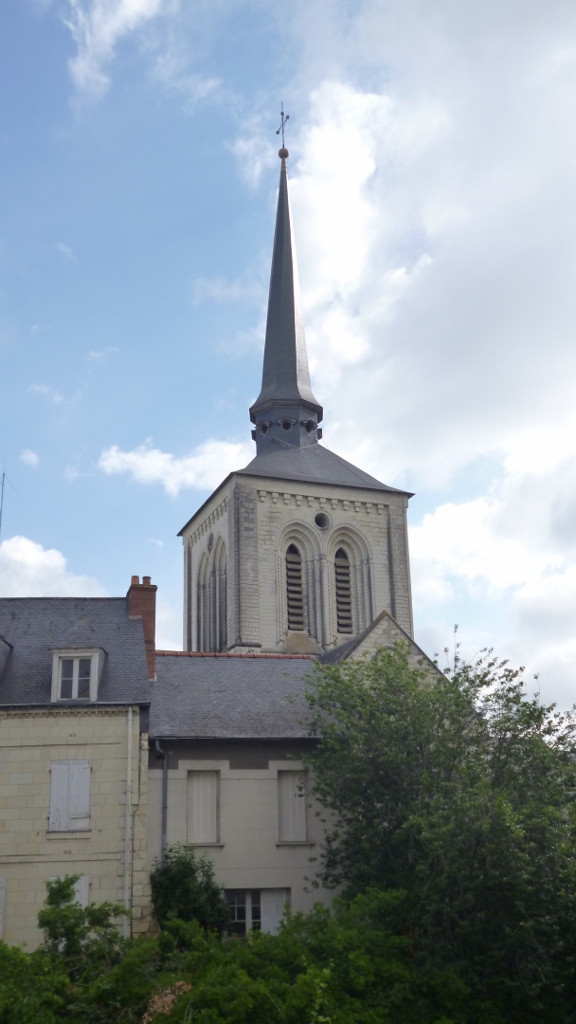 It is a building that dates from the second half of the 12th century. After its collapse in 1673, the façade was built in a classical style. Unfortunately, the church is closed and undergoing a complete restoration until 2014. It has been a historical monument since 1862. One of its most interesting features is its spiral steeple which doesn't really spiral that much.
It is a building that dates from the second half of the 12th century. After its collapse in 1673, the façade was built in a classical style. Unfortunately, the church is closed and undergoing a complete restoration until 2014. It has been a historical monument since 1862. One of its most interesting features is its spiral steeple which doesn't really spiral that much. 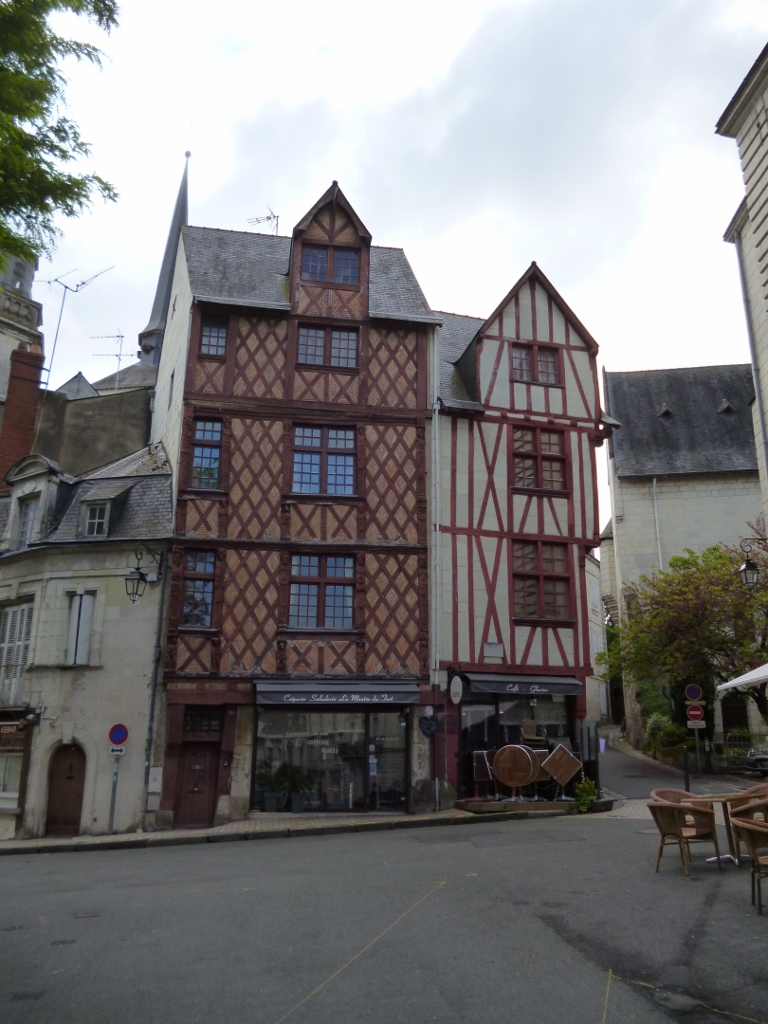
 At the front of the church is the Place Saint-Pierre which is surrounded by several old timber framed houses which date from the 15th and 16th century. After leaving the tourist office, one of the first things to see in Saumur is the Pont Cessart which spans the river Loire with twelve basket handle arches.
At the front of the church is the Place Saint-Pierre which is surrounded by several old timber framed houses which date from the 15th and 16th century. After leaving the tourist office, one of the first things to see in Saumur is the Pont Cessart which spans the river Loire with twelve basket handle arches. 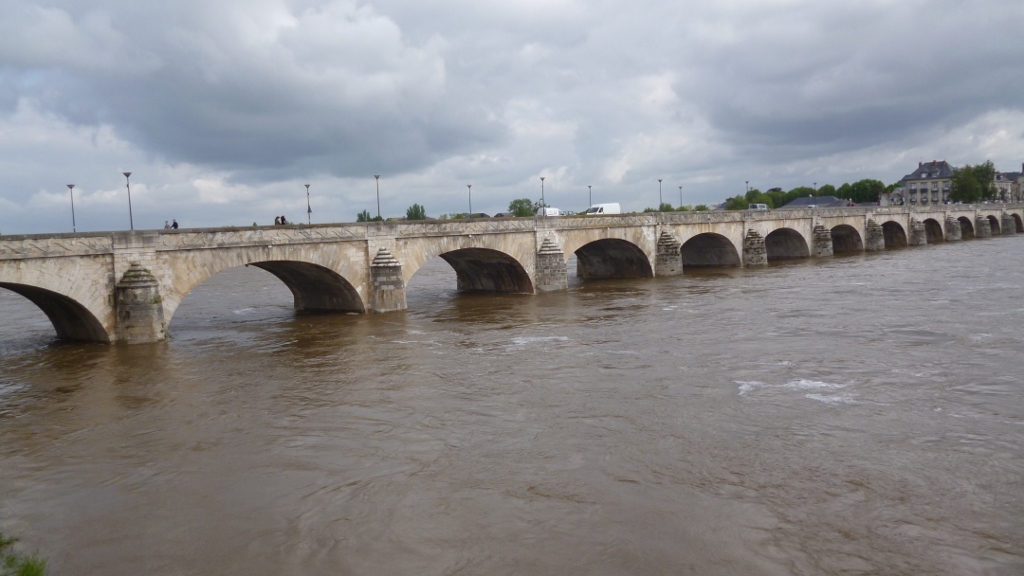 It was built with the labor of 600 men in 1757 and finally completed in 1770. It was restored to its former glory after German forces destroyed some of the arches in 1944.
It was built with the labor of 600 men in 1757 and finally completed in 1770. It was restored to its former glory after German forces destroyed some of the arches in 1944.  This is the Hôtel de Ville located along the banks of the Loire. The old part of the building, flanked by two turrets, dates from the 15th century. It was originally a fortified stronghold incorporated into the city walls and was intended to enhance the protection of the bridge. Its façade is decorated in the Gothic style.
This is the Hôtel de Ville located along the banks of the Loire. The old part of the building, flanked by two turrets, dates from the 15th century. It was originally a fortified stronghold incorporated into the city walls and was intended to enhance the protection of the bridge. Its façade is decorated in the Gothic style.  Standing twenty meters tall, the tour Grénetière, built in the 15th century, was the most impressive of the city’s defensive system. It takes its name from its use as a wheat granary in the 17th century. It became a prison for salt smugglers in 1694.
Standing twenty meters tall, the tour Grénetière, built in the 15th century, was the most impressive of the city’s defensive system. It takes its name from its use as a wheat granary in the 17th century. It became a prison for salt smugglers in 1694. 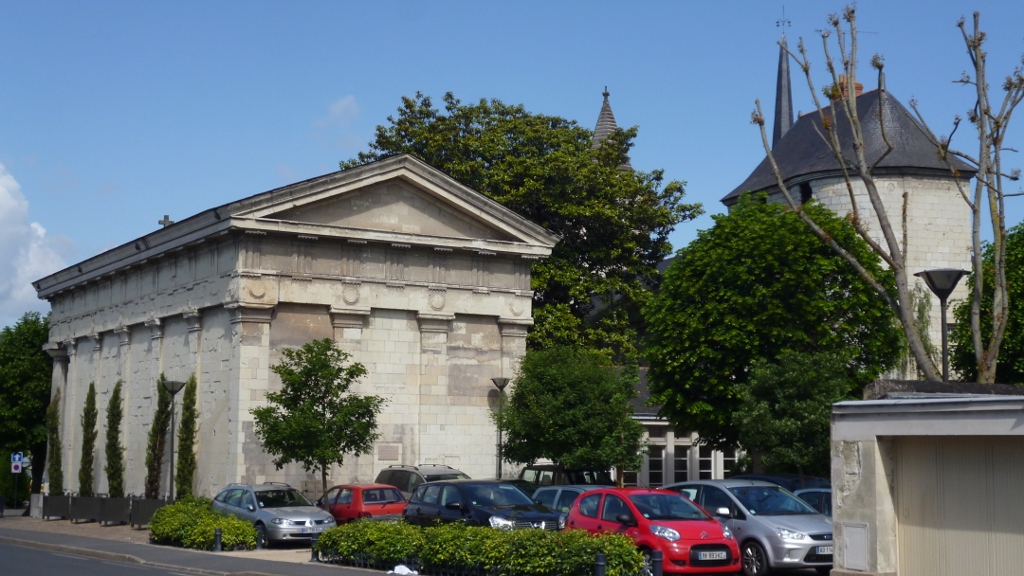 Saumur’s first protestant temple was built in 1593 but after the revocation of the Edict of Nantes it was destroyed in 1685. The new temple was constructed outside the city walls in 1842 by architect Joly-Leterme. It is a Neo-classical rectangular building with four Doric columns. The tympanum represents the burning bush with the inscription "To God alone the glory." Despite poor reviews in my guidebook, I decided to visit the famous castle that overlooks the city.
Saumur’s first protestant temple was built in 1593 but after the revocation of the Edict of Nantes it was destroyed in 1685. The new temple was constructed outside the city walls in 1842 by architect Joly-Leterme. It is a Neo-classical rectangular building with four Doric columns. The tympanum represents the burning bush with the inscription "To God alone the glory." Despite poor reviews in my guidebook, I decided to visit the famous castle that overlooks the city. 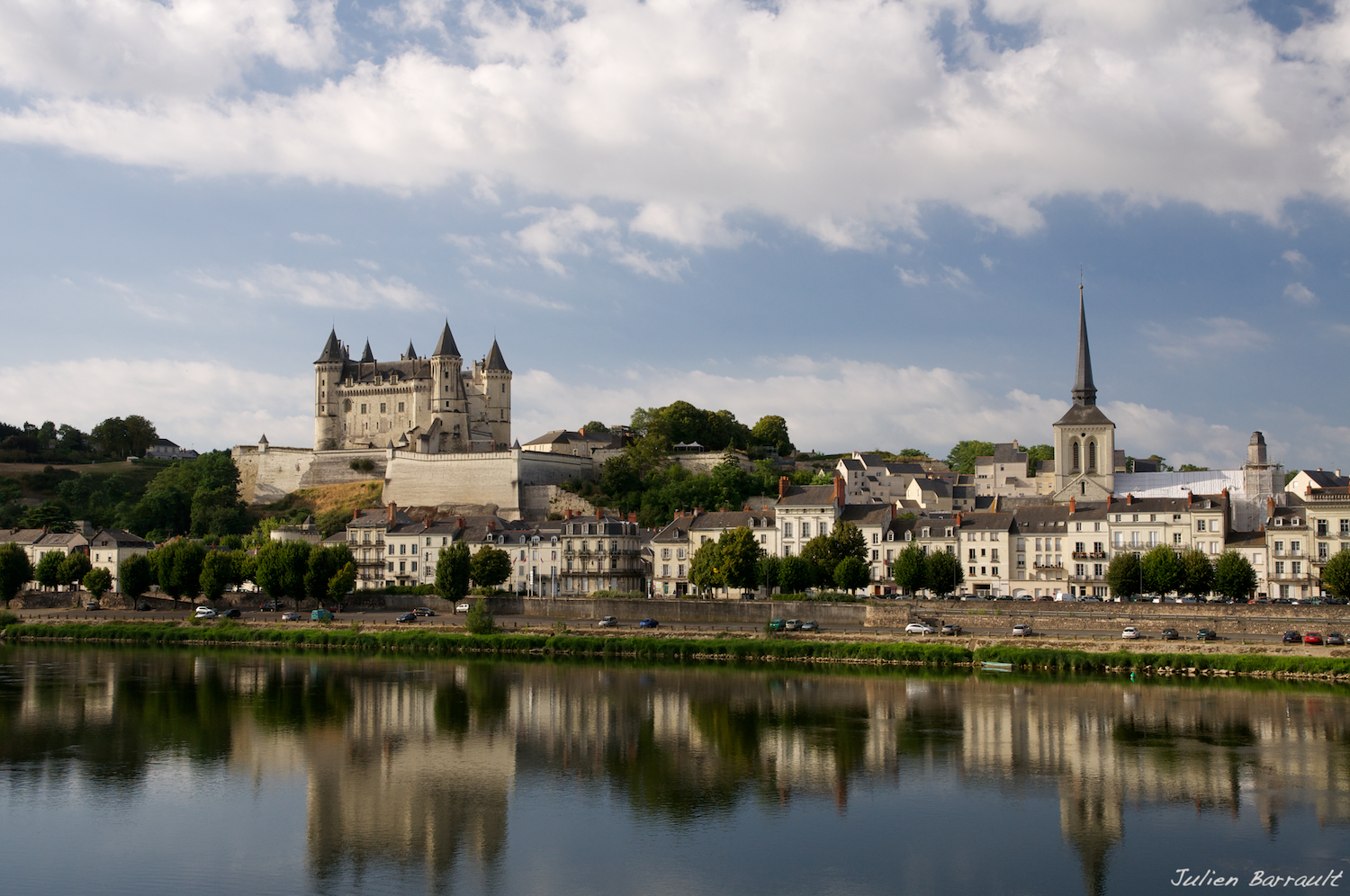 The Château de Saumur, originally built as a castle and later developed as a château, was originally constructed in the 10th century by Theobald I, Count of Blois, as a fortified stronghold against Norman invaders. It overlooks the confluence of the Loire and the Thouet.
The Château de Saumur, originally built as a castle and later developed as a château, was originally constructed in the 10th century by Theobald I, Count of Blois, as a fortified stronghold against Norman invaders. It overlooks the confluence of the Loire and the Thouet. 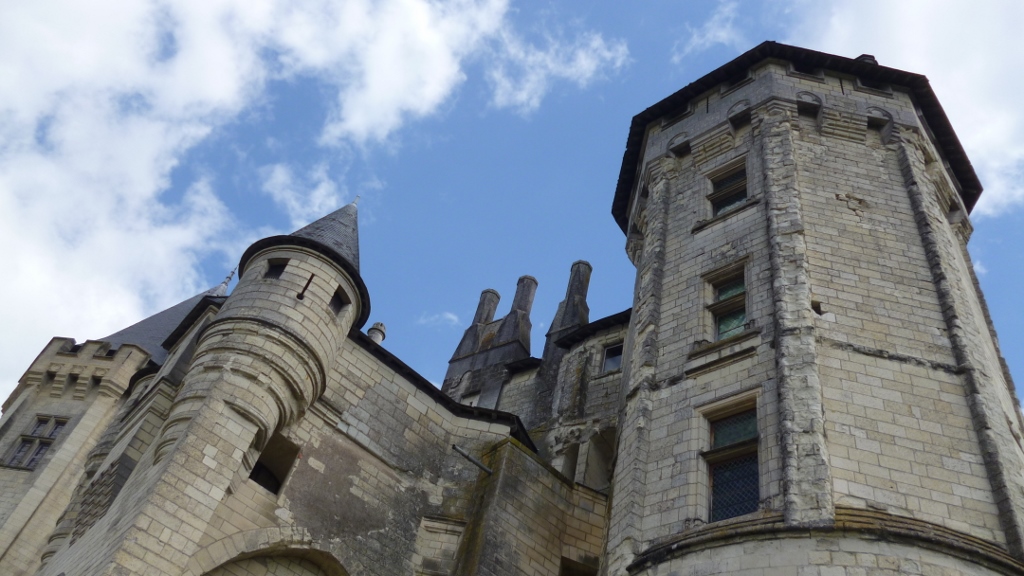 In 1026 it came into the hands of Fulk Nerra, count of Anjou, who bequeathed it to his Plantagenet heirs. Following its destruction in 1067, the castle was rebuilt by Henry II of England in the 12th century. Since then it has undergone many different owners and uses. In the early part of the 13th century, Philip II of France made Saumur part of his royal domain. A page from the Très Riches Heures du Duc de Berry depicts the château as it looked in 1410.
In 1026 it came into the hands of Fulk Nerra, count of Anjou, who bequeathed it to his Plantagenet heirs. Following its destruction in 1067, the castle was rebuilt by Henry II of England in the 12th century. Since then it has undergone many different owners and uses. In the early part of the 13th century, Philip II of France made Saumur part of his royal domain. A page from the Très Riches Heures du Duc de Berry depicts the château as it looked in 1410. 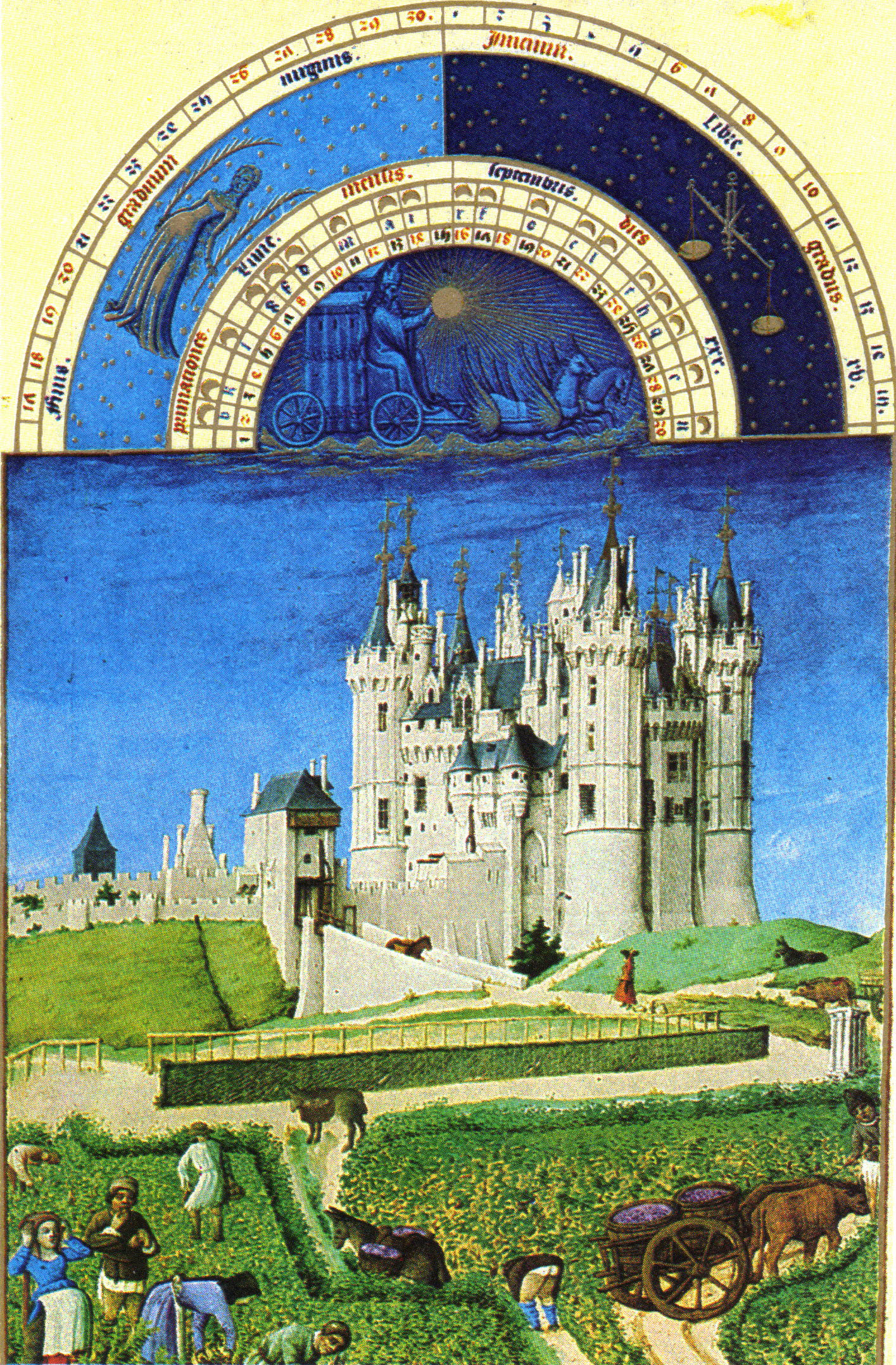 It changed hands several times until 1589 when the Protestant King Henri IV gave the castle to Duplessis-Mornay. In 1621 the castle was converted into an army barracks. Nearly two centuries later it was converted into a state prison under Napoleon Bonaparte. It now serves as a museum featuring tableware, porcelain and crockery. It even houses some interesting pieces of religious art.
It changed hands several times until 1589 when the Protestant King Henri IV gave the castle to Duplessis-Mornay. In 1621 the castle was converted into an army barracks. Nearly two centuries later it was converted into a state prison under Napoleon Bonaparte. It now serves as a museum featuring tableware, porcelain and crockery. It even houses some interesting pieces of religious art.